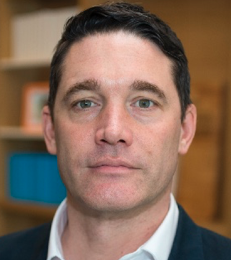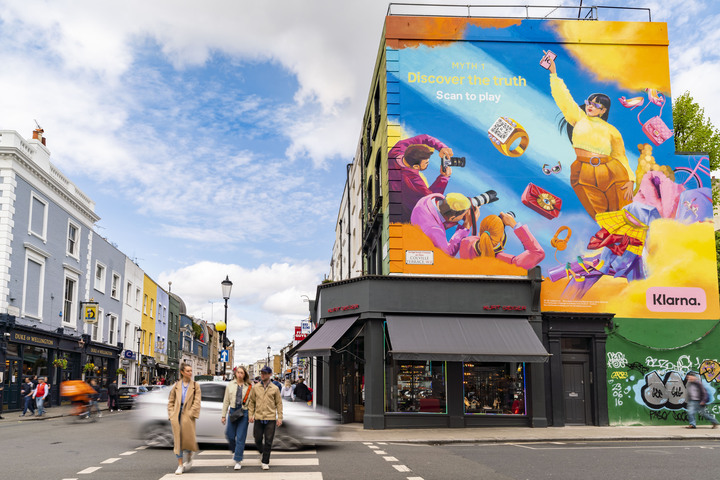Opinion
The challenge the OOH sector now faces is to reach and surpass pre-pandemic levels of growth, writes the CEO of Kinetic.
Last week’s figures from Outsmart and PwC made encouraging reading. Out of Home (OOH) revenue was up 65% to £336m in Q4 2021 from £204m in Q4 2020, while overall the industry grew 29% year on year.
But the positive results won’t surprise anyone working in the OOH industry. Throughout the pandemic OOH became smarter and more flexible, finding ever more inventive ways to connect with people and drive real impact. Fuelled by new tech, dynamic data-led creative messaging, smart thinking, and simple imagination, we’ve seen more unique creative solutions than ever before.
At Kinetic we experienced a very strong Q4 in terms of revenue, with clients across all sectors investing confidently in the channel. And the reasons behind such a strong recovery are numerous.
Outside is where people want to live their lives
First, and most obviously, the OOH audience is back (and has been for quite a while). Even accounting for work from home guidance, two thirds of the UK working population travelled into work in January according to the ONS. And our latest research shows this will have hit 86% by the end of February.
Since the work-from-home guidance was lifted we’ve seen roadside, point-of-sale and shopping mall audiences maintain or even exceed pre-Covid levels of impact delivery. Outside is where people want to live their lives and with the final covid restrictions lifting last week in England and to be lifted shortly in the rest of the UK, it’s a trend that we believe will continue. What is even more encouraging are the signs of pent-up demand, with the CBI reporting sales volumes well above seasonal norms in February.
Secondly, it’s no surprise to see that digital continues to drive growth in OOH. Investment in screens and the data-driven innovation that supports them, provided our medium with resilience during lockdown and will provide the fuel that super-charges the on-going recovery.
While real-time data helped us understand changing movement patterns as we emerged from the pandemic, the opportunity now is to combine data with automated technology and digital OOH to deliver smarter and faster activations that bring utility and value to people and brands alike.
 Alistair MacCallum
Alistair MacCallumAs we learn to “live with Covid” the news reminds us that we remain in challenging times, with rising cost of living, global instability, and the climate crisis all impacting our daily lives. In periods of uncertainty, the ability to offer brands nimble, data-driven campaigns will remain a key strength of OOH. And while agencies, brands and online media owners will be rethinking their approach in 2022 and 2023 as cookies cease to exist, OOH is leading the way in the application of anonymised and aggregated geo-contextual data.
Elsewhere, OOH has capitalised on some of the new behaviours we have all developed as a result of the pandemic.
Our relationship with our mobile phones deepened even further as people sought new ways to connect to the people, places and things they were denied during the worst parts of the pandemic. Businesses meanwhile tested new strategies and platforms to represent their brand and deliver their services digitally.
Augmented reality (AR) quickly become an essential technology for retailers, allowing shoppers to visualise, personalise and test products before purchase. AR showed that as well as being fun it can solve actual pain points for customers. With more people than ever now comfortable with this kind of technology, we believe integrating and layering mobile over OOH spaces will be a growth area, adding a more creative and immersive dimension to OOH campaigns.
OOH growth is not exclusive to digital
And this marriage between mobile and OOH isn’t confined to the cutting edge. Who would have thought two years ago that we would have become used to scanning a QR code to see a restaurant’s menu? With QR codes firmly back in the mainstream, Klarna incorporated them into murals by Spanish Artist Ignasi Monreal in London, Manchester, Liverpool and Birmingham. Scanning the code drove people to an online gallery and interactive game. Over 160,000 people visited the gallery, and 45,000 people completed the interactive game.
The Klarna campaign reminds us that OOH’s growth is not exclusive to digital, with classic growing 14% year on year. These figures chime with our experience at Kinetic where we’ve also seen an explosion in demand for creative solutions across all formats.
We’ve seen a real appetite for brands for spectaculars and special builds. Campaigns such as Marmite’s explosive campaign for their limited-edition Chilli Dynamite created a huge buzz online, generating 194 million impressions and £650,000 in earned media – delivering sales five times higher than previous limited-edition releases.
While during Covid restrictions generating social media chatter and earned media was a great way of reaching audiences less likely to leave their homes, the legacy is an increased interest in the role OOH can play within a wider campaign context. This year we will inevitably see more creative OOH campaigns designed with social content and earned media in mind.
So OOH is back and in fact it never went away. A combination of the medium’s traditional strengths, years of investment in data and digital technology, the agility to respond to changing consumer behaviour and advertiser requirements, and some extremely hard work from dedicated and talented people, meant that OOH not only survived covid restrictions, it is now thriving.
Now the challenge is to reach and surpass pre-pandemic levels of growth – it’s a challenge we’re more than ready for.
Alistair MacCallum is UK CEO of WPP outdoor media agency Kinetic Worldwide.
Adwanted UK is the trusted delivery partner for three essential services which deliver accountability, standardisation, and audience data for the out-of-home industry.
Playout is Outsmart’s new system to centralise and standardise playout reporting data across all outdoor media owners in the UK.
SPACE is the industry’s comprehensive inventory database delivered through a collaboration between IPAO and Outsmart.
The RouteAPI is a SaaS solution which delivers the ooh industry’s audience data quickly and simply into clients’ systems.
Contact us for more information on SPACE, J-ET, Audiotrack or our data engines.






 Alistair MacCallum
Alistair MacCallum